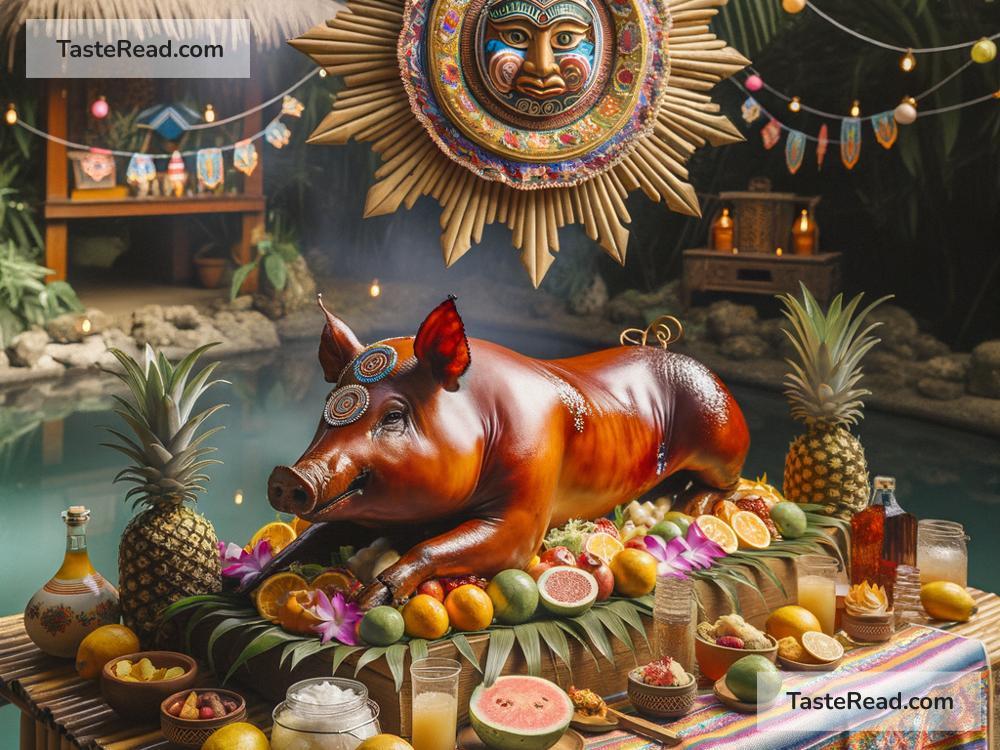Title: Savoring Tradition: How the Filipino Lechon Became a Feast Essential
From the bustling streets of Manila to the serene landscapes of the provinces, one dish has consistently taken the center stage in every Filipino celebration – the Lechon. This mouth-watering feast essential is more than just a culinary delight; it’s a symbol of festivity, unity, and the rich cultural heritage of the Philippines. But how did the Filipino Lechon rise to such prominence and become an indispensable part of every Filipino festivity? Let’s embark on a flavorful journey to explore the evolution of Lechon in Filipino culture and celebrations.
The Origin Story
Lechon, which originated from Spain, means ‘roasted suckling pig’ and is a dish popular in several regions worldwide that were formerly part of the Spanish Empire. However, it has been uniquely adopted and perfected in the Philippines, becoming one of the nation’s signature dishes. While the Spanish introduced the concept of roasting pigs, Filipinos infused it with local spices and cooking methods, transforming it into the Lechon we know and love today.
Central to Celebrations
In the Philippines, Lechon is not just a dish; it’s the star of the show. It’s the dish that families save up for, the highlight of weddings, birthdays, fiestas, and even political rallies. The presence of Lechon is a sign of abundance and prosperity, making it a social status symbol in many gatherings. It’s common to see a whole pig, glistening and golden-brown, slowly being roasted over a charcoal pit, teasing the senses with its irresistible aroma. This sumptuous dish is usually placed at the center of the buffet table, symbolizing the warmth and generosity of Filipino hospitality.
The Lechon-Making Process
Making Lechon is an art form that requires patience and expertise. The process begins with selecting a young, healthy pig. The pig is then cleaned and stuffed with a mix of herbs and spices, which often include lemongrass, onions, garlic, and bay leaves, varying by region or family recipe. It is then sewn up and slowly roasted over a charcoal fire for several hours. Basting it regularly with a mixture of soy sauce and oil gives the Lechon its distinctive crispy skin and succulent flavor.
Regional Variations
The Lechon also varies from one region to another, each with its unique twist. For instance, in Cebu, known as the Lechon capital of the Philippines, the pig is stuffed with herbs and spices and no sauce is needed to enjoy its flavors. In contrast, Lechon from Luzon might be served with a liver-based sauce called “Lechon sauce” or “Sarsa” making it distinctive to its region.
Lechon Leftovers Transformation
Filipinos detest waste, especially when it comes to Lechon. Leftover Lechon is ingeniously transformed into delicious dishes. The most popular is “Lechon Paksiw,” which is made by simmering pieces of leftover Lechon in vinegar and liver sauce. This dish allows the celebration to continue and the flavors of the Lechon to be savored in a new, equally delicious form.
More Than Just a Dish
The Filipino Lechon is more than just a feast for the palate; it’s a feast for the soul, embodying the Filipino spirit of community, resilience, and celebration. It brings families and communities together, transcending social and economic barriers. Preparing and sharing Lechon is an expression of love, gratitude, and joy, making it an integral part of Filipino culture and traditions.
The Feast Essential
It’s impossible to imagine a major Filipino celebration without the presence of Lechon. Its crispy skin, tender and flavorful meat, and the joy it brings to every occasion firmly establish it as the centerpiece of Filipino festivities. The Lechon’s importance goes beyond its taste; it’s a culinary tradition that celebrates Filipino identity, unity, and the enduring spirit of festivity.
In conclusion, the Filipino Lechon has rightfully earned its status as a feast essential, symbolizing more than just culinary excellence but an epitome of Filipino culture, tradition, and the celebration of life itself. Its universal appeal, ability to bring people together, and the deep-rooted tradition it represents, ensure that the Lechon will continue to be a cherished dish in the Philippines for generations to come. So the next time you find yourself in front of this festive dish, take a moment to appreciate the rich history and cultural significance that makes the Filipino Lechon a true feast essential.


